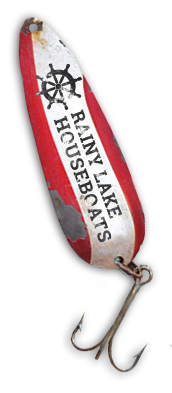Winter has definitely settled in on Rainy Lake. A normal old-fashioned winter has taken hold. Unlike the rest of Minnesota we have snow and and plenty of it. Snowmobiling is excellent on both the groomed lake and land trails.
Ice is as good as it has been in some time. We have had some temperatures that have been a little on the extreme side -46 this past Saturday morning. The temp actually rose to +3 by noon.
What does all this mean to you as far as spring and summer goes? Rainy Lake should have a more normal ice out than 2010 and 2012. Both were set records as the earliest ice outs on record. Rainy Lake will be much more like it is supposed to be. Normal water flows from the incoming rivers and feeding watersheds. Ice out should occur in the normal range in late April or early May.
During a normal year the fish movements are much more predictable. The current flows through almost all of the bays on Rainy Lake. It is not always noticeable (more so with light winds) but it has an effect never the less. Certain areas of the bays warm quicker than others. Sometimes you move to the shore with the wind blowing in and the temp is cooler. How so? The wind moves surface the fastest warming shoreline water on the windy side. Current tends to move all the water slowly but at the same time cooling the warmer water driven by wind. Smallmouth can be very affected by the wind and current actions, mostly positively.
When the smallies nest in a bay you will find them in certain areas fanning beds. A week later in a different area there are new beds with smallies on them. All that has happened is a area with slow moving current has warmed sufficiently to stimulate the smallies to spawn. This is one of the reasons you see beds in the same place year after year.
Nesting conditions for ducks, geese, loons, and swans are much better. Early ice-outs usually mean low water; normal ice out is usually an indicator of normal water levels. Loons are really affected by water levels. They cannot walk on land and therefore nest extremely close to the water’s edge. Once they go to nest it is important for the water levels to remain constant, if it goes up their nest flood and they must build new and lay eggs again. Normal hatching season for the loons is from July 1-6, and the signet swans about a week earlier.
May and June reservations are flowing in very well. Many of our May and June customers come for the fishing experience. They are a lot like me, they love the normal spring and early summer season that we are used to after all these years. Hopefully, the ultra-warm early springs are not the norm.
I could go on and on frankly I just can’t wait for ice out!

